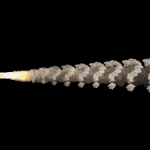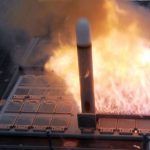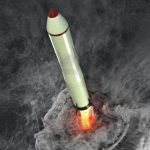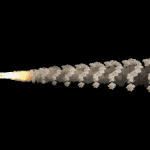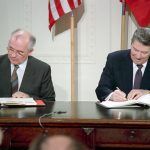What the impending death of the INF teaches about future arms control agreements
By Perry World House | December 6, 2018
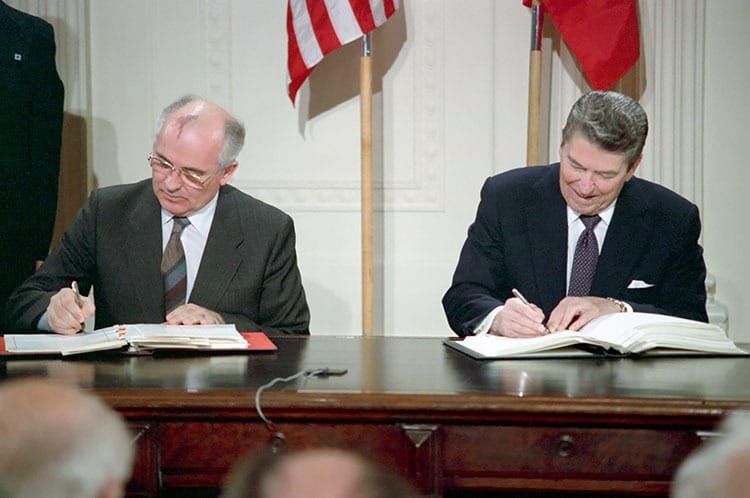 President Ronald Reagan and Soviet General Secretary Gorbachev signing the INF Treaty in the East Room of the White House on December 8, 1987. Credit: Ronald Reagan Presidential Library
President Ronald Reagan and Soviet General Secretary Gorbachev signing the INF Treaty in the East Room of the White House on December 8, 1987. Credit: Ronald Reagan Presidential Library
In response to alleged Russian violations, the United States is poised to withdraw from the Intermediate-Range Nuclear Forces Treaty (INF). Signed in 1987 by Ronald Reagan and Mikhail Gorbachev, the INF bans the production, possession, and deployment of all nuclear and conventional ground-launched missiles with ranges between 500 and 5,500 kilometers. While the pros and cons of pulling out of the INF have been thoroughly debated, a subject that has received much less attention is what the impending death of the INF can teach us about future arms control agreements. Specifically, how can future treaties be designed to avoid the fate of the INF?
Limits rather than bans. It is important to remember that the INF doesn’t just put a ceiling on how many land-based intermediate-range missiles Russia and the United States are allowed to have, but actually prohibits both states from having a single one of these weapons. Besides eliminating an entire class of weapons, this approach has one major advantage: Verification is substantially easier when the mere existence of a weapons system, rather than a limit on the number of systems, constitutes a treaty violation. An agreement based on complete disarmament, however, is more restrictive than one based on caps. Especially for treaties that are of unlimited duration, like the INF, outlawing an entire class of weapons doesn’t give states much flexibility to cope with changing circumstances over time.
When the INF was signed, the Soviet Union and the United States were the only two great powers in the world. Today, the Soviet Union is no more, NATO is larger than it was in the 1980s and has expanded eastward, and China is a full-fledged great power. These changes have given both Russia and the United States security incentives to want at least a limited intermediate-range missile capability.
Russia’s immediate incentive is NATO. Russia’s short-range missiles would have a difficult time reaching critical NATO targets in western Europe and ballistic missile defense sites in eastern Europe, if they were deployed on the Russian mainland. Basing wouldn’t have been as much of an issue when the INF was signed in 1987 and Russia controlled much more territory in eastern Europe. Today, Russia’s most forward base for those short-range missiles would be the enclave of Kaliningrad, but that territory is vulnerable precisely because it is an enclave surrounded by NATO allies.
Russia and the United States also have incentives to pursue a limited intermediate-range missile capability to combat rising powers that are not parties to the INF. For example, approximately 95 percent of Chinese missiles would violate the INF if China were a signatory. Vladimir Putin has complained that “nearly all of our neighbors are developing these kinds of weapons systems.” Donald Trump has declared that “if Russia’s doing it and if China’s doing it and we’re adhering to the agreement, that’s unacceptable.” If Russia and the United States could’ve developed intermediate-range missiles within reasonable limits, perhaps the INF Treaty would have had a greater chance of surviving. Especially because advances in national technical means make detecting limit violations easier, future arms control agreements should take this lesson into account.
Focus on nuclear rather than conventional weapons. Although it’s named the Intermediate-Range Nuclear Forces Treaty, the INF bans both nuclear and conventional land-based missiles of intermediate range. A narrower scope would have produced less of a security incentive for Russia to violate the treaty and for the US to withdraw from it.
While Russia is more dependent on nuclear weapons for security than the United States, conventional intermediate-range missiles could give Russia the ability to strike US missile defense sites in eastern Europe and other NATO targets in western Europe. If the INF allowed conventional ground-launched intermediate-range missiles, Russia may have been willing to forgo developing missiles of this type that have nuclear capability. Similarly, even proponents of a US withdrawal from the INF often explicitly oppose the US introduction of nuclear-armed intermediate range missiles in the Asia-Pacific region.
Russia and the United States still have thousands of nuclear weapons, and even a “limited” nuclear war would entail unthinkable devastation. Both countries have more to gain from acquiring new classes of conventional weapons rather than additional nuclear warheads. Future arms control agreements may be more likely to endure if they focus strictly on limiting the most destructive type of arms—nuclear weapons.
Multilateral rather than bilateral agreements. Bilateral treaties, like the INF, should be relatively sustainable for arms control agreements that focus exclusively on limiting nuclear weapons. Russia and the United States have more than 90 percent of the world’s nuclear weapons; agreeing, bilaterally, to limit their nuclear stockpiles still allows them to maintain many more nuclear weapons than other countries. But if arms control agreements that go beyond nuclear weapons are to endure, they may have to be multilateral pacts that include rising powers like China and India.
Russia violated the INF and the United States plans to withdraw from it largely because other countries are legally free to produce as many ground-launched intermediate-range missiles as they want. If China and perhaps other major powers were INF signatories, the treaty might have had greater chance of surviving. In fact, in 2007 Russia drafted and the United States supported a United Nations proposal that called on all countries with ground-launched intermediate-range missiles to join the INF. This plan went nowhere, demonstrating the difficulty of negotiating multilateral agreements. Still, future treaties may better withstand the test of time if efforts are made early in the negotiation process to include as many relevant countries as possible.
Indefinite rather than temporary verification procedures. When the INF was first agreed, its intrusive verification system—including short-notice visits and 24-hour monitoring of missile production facilities—was hailed as the most comprehensive verification procedure ever in an arms control agreement. The missile production portal monitoring arrangement was particularly innovative, as no previous agreement provided for a permanent presence of inspectors at production facilities. But on-site verification within the INF expired in 2001, as stipulated in the text of the treaty. In the 17 years since, the US and Russia have been able to rely on technical means, chiefly satellite observation, to ensure continued compliance. Questions about compliance are, nevertheless, one reason why the INF failed. If the INF had provided for continuing on-site verification, the agreement might have been more likely to survive.
The INF’s demise was sparked by Russia’s alleged development and deployment of a banned intermediate-range missile. The United States identified and exposed this violation without on-site verification at Russian missile facilities. Still, Russia’s breach would’ve been more embarrassing and harder to deny had on-site inspectors verified it. It is possible that Russia’s apparent INF violation was discovered through covert operations; the US government has been vague when discussing its intelligence on this issue. This vagueness has led to uncertainty in the past about exactly which Russian missile is allegedly in violation, and even whether the US government is mistaking a sea-launched missile allowed under the INF for a banned ground-launched missile. This ambiguity enhances the credibility of Russian denials and reduces the domestic and international costs Russia pays for its violation.
If the US allegations were backed with direct evidence from on-site inspections, on the other hand, it would’ve been much harder for Russia to deny their infraction. Russia may have returned to compliance after the US identified the violation, or to have avoided violating the treaty in the first place.
Going forward, unlimited duration arms control treaties should not have time-limited verification procedures, and especially not time-limited on-site inspection procedures. Round-the-clock monitoring and personnel exchanges are the most effective means of monitoring treaty compliance. While negotiating long-term on-site inspection procedures might complicate the bargaining process, the attendant gains in confidence about compliance and treaty durability could well be worth the extra effort.
Mechanisms to update the agreement. With perpetual treaties like the INF, technological innovations and relative power shifts are bound to become issues at some point. For example, Russia argues that US drones violate the INF; meanwhile, the US, Russian, and Chinese militaries have all invested in ground-launched hypersonic missiles and long-range cannons that skirt the spirit of the INF. China’s rise is also a variable that the INF does not account for. These developments suggest that making time-unlimited arms control agreements durable in the long run requires some sort of mechanism for adapting to new realities.
The INF does have an implementing body, the Special Verification Committee, that is designed to resolve compliance questions. But committee meetings in 2016 and 2017 did nothing to resolve the US-Russia standoff. Dedicated mechanisms for revising statutory language to accommodate technological and geopolitical developments should be built into future arms control treaties. Revision procedures could take the form of limited, focused meetings on new technologies, or could include more substantial measures like a “Changing Circumstances Clause,” which a state party could invoke to initiate a period within which the parties must re-negotiate or else the agreement automatically lapses. Such a clause would likely have done more than the Special Verification Committee to put pressure on both sides to revise the INF. Revision procedures within time-unlimited agreements would also provide a distinct advantage over time-limited treaties, such as START I and New START, which accommodate changing strategic circumstances by lapsing in a set timeframe. Negotiating new treaties is costly; a means of making revisions within the existing treaty framework would provide flexibility and save time and money.
This column was written by Christopher W. Blair (@cwblair10) and Joshua A. Schwartz (@JoshuaASchwartz), doctoral candidates in political science at the University of Pennsylvania
Together, we make the world safer.
The Bulletin elevates expert voices above the noise. But as an independent nonprofit organization, our operations depend on the support of readers like you. Help us continue to deliver quality journalism that holds leaders accountable. Your support of our work at any level is important. In return, we promise our coverage will be understandable, influential, vigilant, solution-oriented, and fair-minded. Together we can make a difference.
Keywords: INF
Topics: Columnists, Nuclear Risk, Nuclear Weapons, The INF Treaty and the Future of Arms Control
Share: [addthis tool="addthis_inline_share_toolbox"]

